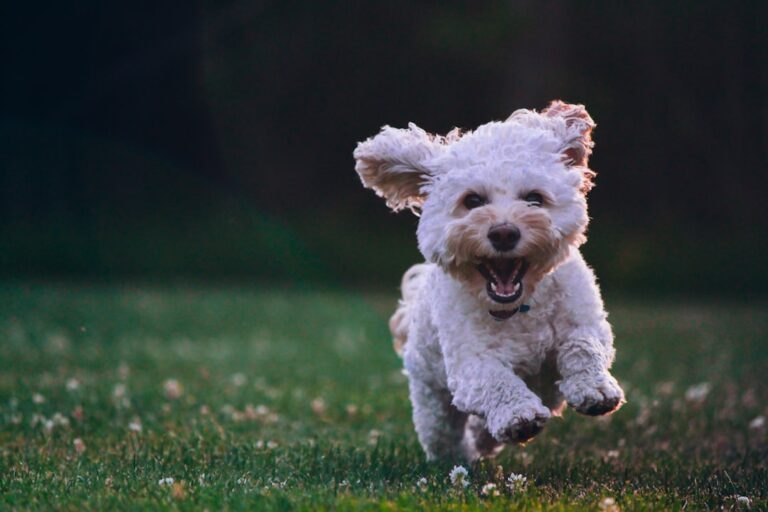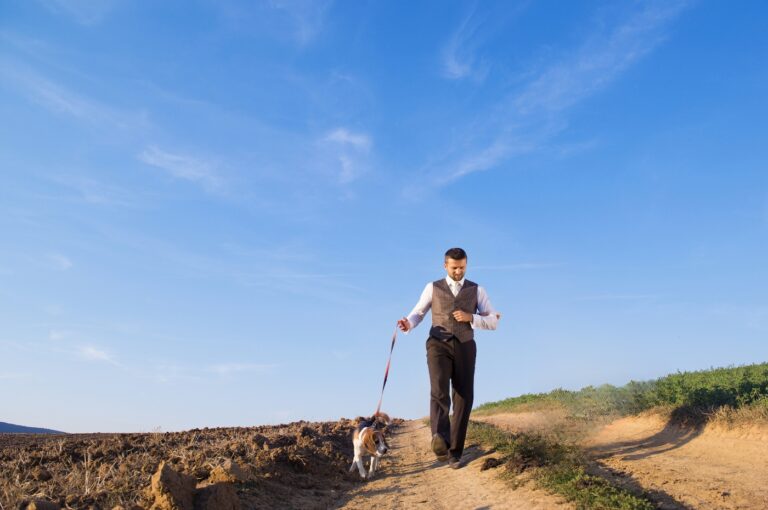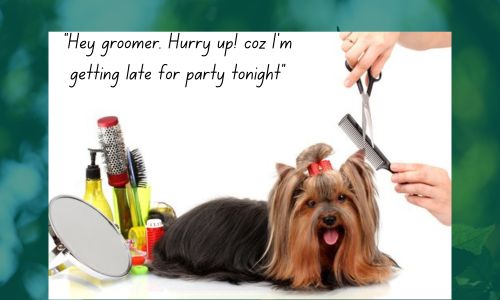Grooming Tips for Hypoallergenic Dogs
Hypoallergenic dogs are breeds that are considered to be more suitable for people with allergies to pet dander. These dogs produce fewer allergens, such as saliva, urine, and dander, which can trigger allergic reactions in some individuals.
It’s important to note that no dog breed is completely hypoallergenic, but some breeds are known to produce fewer allergens than others. These breeds often have a non-shedding coat or produce less dander, making them a better choice for allergy sufferers.
Some popular hypoallergenic dog breeds include the Poodle, Bichon Frise, Maltese, Shih Tzu, and Portuguese Water Dog.
Hypoallergenic dogs are not necessarily low-maintenance when it comes to grooming. While their coats may shed less, they still require regular grooming to keep their coat and skin healthy. It’s important for potential dog owners to understand that hypoallergenic does not mean allergy-free, and individuals with severe allergies should spend time with a specific breed before bringing them into their home. Understanding the characteristics and needs of hypoallergenic dogs is crucial for providing them with the proper care and ensuring a happy and healthy living environment for both the dog and their human companions.
10 Grooming Tips for Hypoallergenic Dogs
Hypoallergenic dogs, while less likely to trigger allergies, still require regular grooming to maintain their coat health and overall well-being. Here are 10 grooming tips to keep your hypoallergenic dog looking and feeling their best:
- Regular Brushing: Even though hypoallergenic dogs have less shedding, regular brushing helps remove loose hair and dander, reducing allergens in your home.
- Gentle Shampooing: Use a gentle, hypoallergenic shampoo to clean your dog’s coat without irritating their skin. Avoid harsh chemicals that can strip away natural oils.
- Frequent Bathing: While less frequent bathing is generally recommended for hypoallergenic dogs, it’s essential to bathe them as needed to remove dirt, oils, and allergens.
- Thorough Drying: After bathing, ensure your dog is completely dry to prevent skin irritation and fungal infections. Use a soft towel or a pet hair dryer on a low setting.
- Nail Trimming: Regularly trim your dog’s nails to prevent them from growing too long and causing discomfort or injury. Consult a professional groomer if you’re unsure how to do it yourself.
- Ear Cleaning: Check your dog’s ears regularly for dirt, wax, or signs of infection. Clean them gently with a pet-safe ear cleaner.
- Dental Care: Good dental hygiene is essential for all dogs, including hypoallergenic breeds. Brush your dog’s teeth regularly or use dental chews to prevent plaque and tartar buildup.
- Professional Grooming: Consider professional grooming sessions every few months to maintain your dog’s coat and overall appearance.
- Diet and Hydration: A balanced diet and adequate hydration contribute to a healthy coat. Consult your veterinarian to determine the best diet for your dog.
- Regular Vet Check-ups: Schedule regular veterinary check-ups to monitor your dog’s overall health and address any potential skin or coat issues.
By following these tips, you can help keep your hypoallergenic dog happy, healthy, and allergen-free.
Key Takeaways
- Hypoallergenic dogs produce fewer allergens, making them a better choice for allergy sufferers.
- Regular bathing and brushing can help reduce allergens on your hypoallergenic dog’s coat.
- Choose grooming products specifically designed for hypoallergenic dogs to minimize allergic reactions.
- Regular trimming and maintenance of your hypoallergenic dog’s coat can help reduce shedding and allergen production.
- Managing allergens in the home, such as regular cleaning and using air purifiers, can help minimize allergic reactions to hypoallergenic dogs.
Bathing and Brushing Tips
Regular bathing and brushing are essential for maintaining the coat and skin health of hypoallergenic dogs. Bathing helps to remove dander and allergens from the coat, while brushing helps to prevent matting and tangling, which can lead to skin irritation. When bathing a hypoallergenic dog, it’s important to use a gentle, hypoallergenic shampoo that won’t strip the natural oils from their skin. It’s also important to thoroughly rinse the coat to remove all traces of shampoo, as leftover residue can cause skin irritation and dryness.
Brushing should be done at least a few times a week to prevent matting and tangles in the coat. Use a slicker brush or comb designed for your dog’s specific coat type to gently remove any loose hair and prevent the buildup of dander. Regular brushing also helps to distribute natural oils throughout the coat, keeping it healthy and shiny. It’s important to be gentle when brushing a hypoallergenic dog, as their skin can be sensitive. Taking the time to properly bathe and brush your hypoallergenic dog will not only help manage allergens but also keep their coat healthy and free from skin issues.
Choosing the Right Grooming Products
When it comes to grooming hypoallergenic dogs, choosing the right grooming products is crucial for maintaining their coat and skin health. Look for gentle, hypoallergenic shampoos and conditioners that are specifically formulated for sensitive skin. Avoid products with harsh chemicals or strong fragrances, as these can cause skin irritation and dryness. It’s also important to choose grooming tools that are designed for your dog’s specific coat type, such as slicker brushes, combs, and detangling sprays.
In addition to shampoos and brushes, consider using grooming wipes to clean your dog’s paws and face between baths. These wipes are gentle enough for sensitive skin and can help remove allergens and dirt that can accumulate on your dog’s fur. When choosing grooming products for your hypoallergenic dog, always read the labels carefully and look for products that are free from common allergens and irritants. Taking the time to select the right grooming products will help keep your dog’s coat and skin healthy and reduce the risk of allergic reactions.
Trimming and Maintaining Their Coat
| Coat Type | Frequency of Trimming | Maintenance Tips |
|---|---|---|
| Long-haired | Every 6-8 weeks | Regular brushing and detangling to prevent matting |
| Short-haired | Every 3-4 months | Occasional brushing and bathing to remove loose hair |
| Curly-coated | Every 2-3 months | Use of specialized grooming tools to maintain curls |
Regular trimming is essential for maintaining the coat of hypoallergenic dogs. While these breeds may not shed as much as others, their hair can still grow long and become tangled if not properly maintained. Keeping their coat trimmed not only helps manage allergens but also prevents matting and tangling, which can lead to skin irritation. Depending on the breed, some hypoallergenic dogs may require professional grooming every 4-6 weeks to keep their coat at an optimal length.
In addition to regular trimming, it’s important to maintain their coat by keeping it clean and free from tangles. Regular brushing helps prevent matting and removes loose hair and dander from the coat. It’s also important to check their ears regularly for wax buildup and trim their nails as needed to prevent overgrowth. Proper coat maintenance is essential for keeping hypoallergenic dogs comfortable and healthy, as well as reducing the risk of allergic reactions in their human companions.
Managing Allergens in the Home
In addition to regular grooming, there are several steps you can take to manage allergens in your home when living with a hypoallergenic dog. Vacuuming regularly with a vacuum cleaner equipped with a HEPA filter can help remove pet dander from carpets and furniture. Washing your dog’s bedding frequently in hot water can also help eliminate allergens that may accumulate in their sleeping area. Using air purifiers in your home can help reduce airborne allergens, making it easier for allergy sufferers to breathe comfortably.
It’s also important to keep your home clean and free from dust and pet hair by regularly dusting and wiping down surfaces. Consider using washable slipcovers on furniture to easily remove pet hair and dander, and wash them frequently in hot water. Keeping your home clean and free from allergens is essential for creating a comfortable living environment for both your hypoallergenic dog and anyone with allergies in your household.
Professional Grooming Services

While regular at-home grooming is essential for maintaining the coat and skin health of hypoallergenic dogs, professional grooming services can also be beneficial. Professional groomers have the expertise and tools to properly groom your dog’s coat, including trimming, shaping, and styling their fur. They can also provide additional services such as ear cleaning, nail trimming, and teeth brushing, which are essential for maintaining your dog’s overall health.
Professional groomers are also trained to handle sensitive skin and can recommend specific grooming products that are suitable for your dog’s needs. Additionally, they can provide a thorough cleaning that removes stubborn dirt and allergens from your dog’s coat, helping to reduce allergic reactions in sensitive individuals. While professional grooming services may come at an additional cost, they can be a valuable investment in maintaining the health and well-being of your hypoallergenic dog.
Tips for Managing Allergies in Hypoallergenic Dogs
For individuals with allergies who own hypoallergenic dogs, there are several tips for managing their allergies while still enjoying the companionship of a furry friend. Regular grooming is essential for managing allergens in the home, so be sure to stick to a consistent grooming routine for your dog. Keep their coat clean and well-maintained to reduce the buildup of dander and allergens that can trigger allergic reactions.
It’s also important to keep your home clean by regularly vacuuming, dusting, and washing your dog’s bedding to remove allergens from your living space. Consider using allergy-friendly products such as air purifiers and hypoallergenic cleaning supplies to create a comfortable environment for both you and your dog. Additionally, consider consulting with an allergist or immunologist for personalized advice on managing your allergies while living with a hypoallergenic dog.
In conclusion, understanding the needs of hypoallergenic dogs is essential for providing them with proper care and maintaining a healthy living environment for allergy sufferers. Regular grooming, choosing the right grooming products, managing allergens in the home, and considering professional grooming services are all important aspects of caring for hypoallergenic dogs. By following these tips and taking proactive measures, individuals with allergies can enjoy the companionship of a hypoallergenic dog while minimizing allergic reactions in their home.
If you’re wondering how to groom a hypoallergenic dog, you’ll want to check out PetsQueue’s article on dog grooming quotes. This insightful piece provides valuable tips and advice on grooming your hypoallergenic pup to keep their coat healthy and allergy-friendly. For more information on grooming services and pricing, visit PetsQueue’s dog grooming quotes page.
FAQs
What is a hypoallergenic dog?
A hypoallergenic dog is a breed that is less likely to cause allergic reactions in people who are sensitive to pet dander. These breeds typically produce fewer allergens and shed less, making them a better choice for allergy sufferers.
How do I groom a hypoallergenic dog?
Grooming a hypoallergenic dog involves regular brushing to prevent matting and to remove loose hair and dander. Bathing should be done as needed, using a gentle, hypoallergenic shampoo. Regular trimming of the dog’s coat and nails is also important to maintain their overall health and hygiene.
What are some common hypoallergenic dog breeds?
Some common hypoallergenic dog breeds include the Poodle, Bichon Frise, Maltese, Shih Tzu, Schnauzer, and Portuguese Water Dog. These breeds are known for producing fewer allergens and are often recommended for people with allergies.
Are hypoallergenic dogs completely allergen-free?
While hypoallergenic dogs produce fewer allergens and shed less, no dog breed is completely allergen-free. It’s important for allergy sufferers to spend time with a specific breed before bringing them into their home to see how they react.
What other grooming practices are important for hypoallergenic dogs?
In addition to regular brushing and bathing, it’s important to keep the dog’s ears clean and dry to prevent infections. Regular dental care, including brushing the dog’s teeth, is also important for their overall health and hygiene. Regular visits to a professional groomer can also help maintain the dog’s coat and overall grooming needs.






![How Can I Teach My Dog to Play With Toys? [Solution Inside]](https://petsqueue.com/wp-content/uploads/2024/11/dog-with-toys.jpg)
